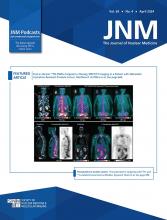Abstract
Quantitative kinetic modeling requires an input function (IF). A non-invasive image-derived IF (IDIF) can be obtained from dynamic PET images. However, a robust IDIF location, (e.g. aorta), may be far away from a tissue of interest, particularly in total-body PET, introducing a time delay between the IDIF and the tissue. The standard practice of joint estimation (JE) of delay, along with model fitting, is computationally expensive. To improve the efficiency of delay correction for total-body PET parametric imaging, this study investigates the use of pulse timing methods to estimate and correct for delay. Methods: Simulation studies were performed with a range of delay values, frame lengths and noise levels, to test the tolerance of two pulse timing methods—leading edge (LE) and constant fraction discrimination (CFD) and their thresholds. The methods were then applied to data from 21 subjects (14 healthy volunteers, 7 cancer patients) that underwent 60-minute dynamic uEXPLORER total-body 18F-FDG PET acquisitions. Region-of-interest (ROI) kinetic analysis and parametric images were generated to compare LE and JE methods of delay correction, as well as no delay correction. Results: Simulations demonstrated that a 10% LE threshold resulted in biases and standard deviations at tolerable levels for all noise levels tested, with 2-second frames. Pooled ROI-based results (N = 154) showed strong agreement between LE (10% threshold) and JE methods in estimating delay (Pearson’s r=0.96, P<1E-3), and kinetic parameters vb (r=0.96, P<1E-3), Ki (r=1.00, P<1E-3), and K1 (r=0.97, P<1E-3). When tissues with minimal delay were excluded from pooled analyses, there were reductions in vb (69.4%) and K1 (4.8%) when delay correction was not performed. Similar results were obtained for parametric images; additionally, lesion Ki contrast was improved overall with LE and JE delay correction compared to no delay correction and Patlak analysis. Conclusion: This study demonstrates the importance of delay correction in total-body PET. LE delay correction can be an efficient surrogate for JE, taking a fraction of the computational time, and allowing for rapid delay correction across >106 voxels in total-body PET datasets.
- Molecular Imaging
- PET/CT
- Radiotracer Tissue Kinetics
- delay correction
- dynamic PET
- input function
- total-body PET
- Copyright © 2021 by the Society of Nuclear Medicine and Molecular Imaging, Inc.







